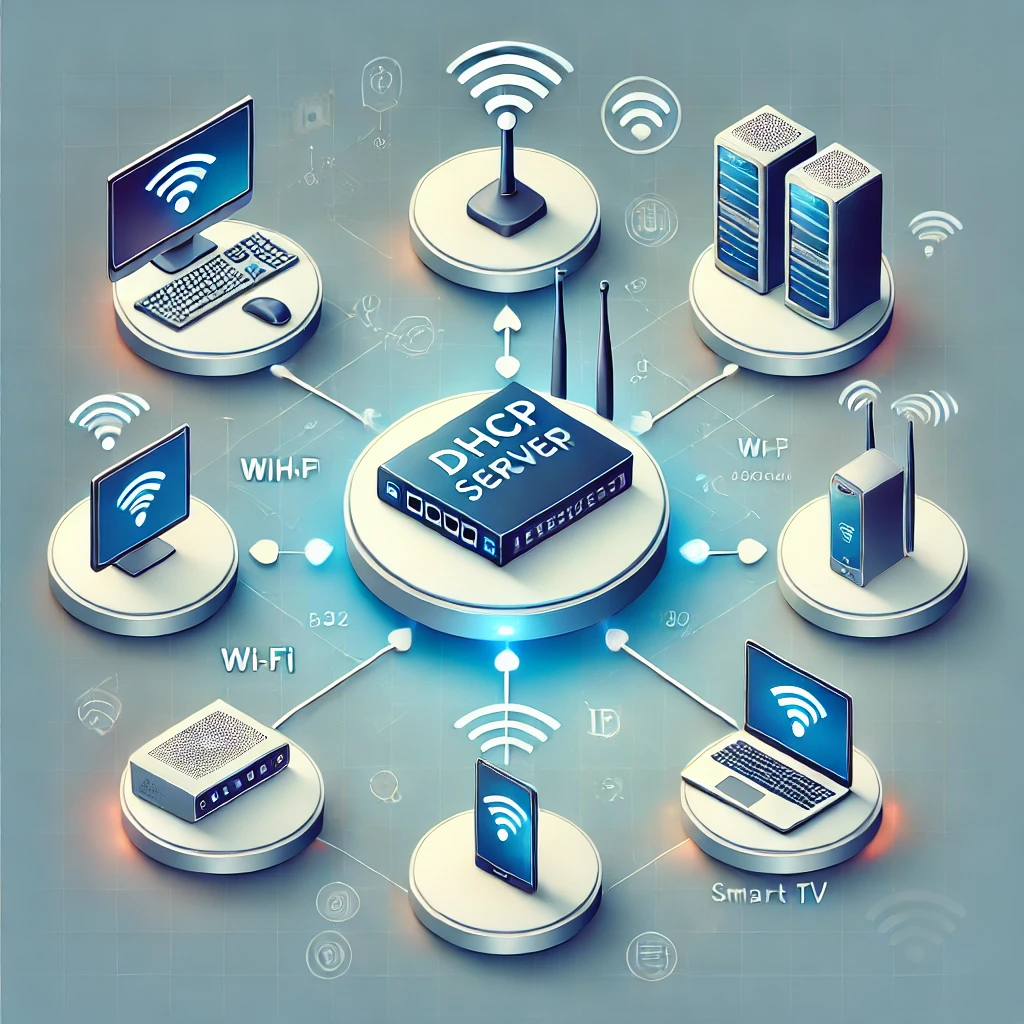If you’ve ever connected a device to your home Wi-Fi and wondered how it automatically gets an IP address, the magic behind it is a DHCP server. We have previously looked at what a DHCP server is, but not at how to run your own DCHP server. After we looked at running a DNS server at home, we thought it good to look at running a DCHP server at home, so let’s get started.
What is a DHCP Server?
DHCP stands for Dynamic Host Configuration Protocol. A DHCP server automatically assigns IP addresses to devices (like your phone, laptop, or smart TV) on your network. Without it, you’d need to manually configure these settings for each device, which can be cumbersome.
For example, imagine your home network is like a party. Each guest (device) needs a seat (IP address). The DHCP server is the host who assigns seats, ensuring no two guests sit in the same spot (avoiding IP address conflicts).
How is it Different from a DNS Server?
While a DHCP server assigns IP addresses, a DNS server (Domain Name System) translates domain names like “google.com” into IP addresses that computers understand. If DHCP is the party host assigning seats, DNS is the translator helping guests understand the seating chart.
Both are essential for a functioning network, but they serve distinct roles.
Your Router: A Built-In DHCP Server
Most home routers come with a built-in DHCP server that works out of the box. When you set up your router, it automatically handles assigning IP addresses to your devices. For most people, this default setup is sufficient and hassle-free.
Why Run Your Own DHCP Server?
Running your own DHCP server can provide more control over your network. Here are a few scenarios where it might make sense:
- Advanced Customization: You want to assign specific IP addresses to certain devices (like a printer or server).
- Multiple Subnets: You’re managing a more complex network with multiple sections (e.g., a smart home setup).
- Learning and Experimentation: You’re curious about networking and want hands-on experience.
How to Run a DHCP Server at Home
Setting up your own DHCP server might sound intimidating, but it can be straightforward with the right tools. Here’s a step-by-step guide:
1. Choose Your Platform
You can run a DHCP server on various devices, such as:
- A Raspberry Pi
- A dedicated computer
- A virtual machine
- Network equipment with custom firmware like OpenWRT
2. Install DHCP Server Software
Some popular options include:
- ISC DHCP Server (Linux) – https://www.isc.org/dhcp/
- DHCP Server for Windows – https://www.dhcpserver.de/cms/
- Pi-hole (for DNS and DHCP) – https://pi-hole.net/ – For more information, read our full article on the Pi-Hole
3. Configure the DHCP Server
- Define the IP address range (e.g., 192.168.1.100 to 192.168.1.200).
- Set the subnet mask (usually 255.255.255.0).
- Specify the gateway address (your router’s IP, e.g., 192.168.1.1).
- Optionally, assign static IPs to specific devices using their MAC addresses.
4. Disable DHCP on Your Router
To avoid conflicts, disable the built-in DHCP server on your router. Check your router’s settings under “LAN” or “Network” configuration.
5. Start Your DHCP Server
Launch the software and verify that it’s running. Use connected devices to confirm they’re receiving IP addresses from the new server.
6. Monitor and Maintain
Periodically check logs or the server’s dashboard to ensure smooth operation.
Pros and Cons of Running Your Own DHCP Server
Pros:
- Customization: Greater control over IP address assignment and network behavior.
- Scalability: Better suited for complex setups or additional subnets.
- Learning Opportunity: Ideal for those interested in networking.
Cons:
- Complexity: Requires setup and ongoing maintenance.
- Potential Downtime: If your DHCP server goes offline, devices may lose connectivity.
- Learning Curve: Understanding network concepts may take time.
Conclusion
A DHCP server is a vital part of any network, ensuring devices can connect seamlessly. While most home routers come with a built-in DHCP server that works for everyday needs, running your own can offer enhanced control and customization.
By following the steps above, you can set up your own DHCP server and explore the intricacies of networking. However, weigh the pros and cons carefully to decide if it’s worth the effort for your home setup. For most, the default router configuration is enough, but for tech enthusiasts, running a DHCP server can be a rewarding project.

